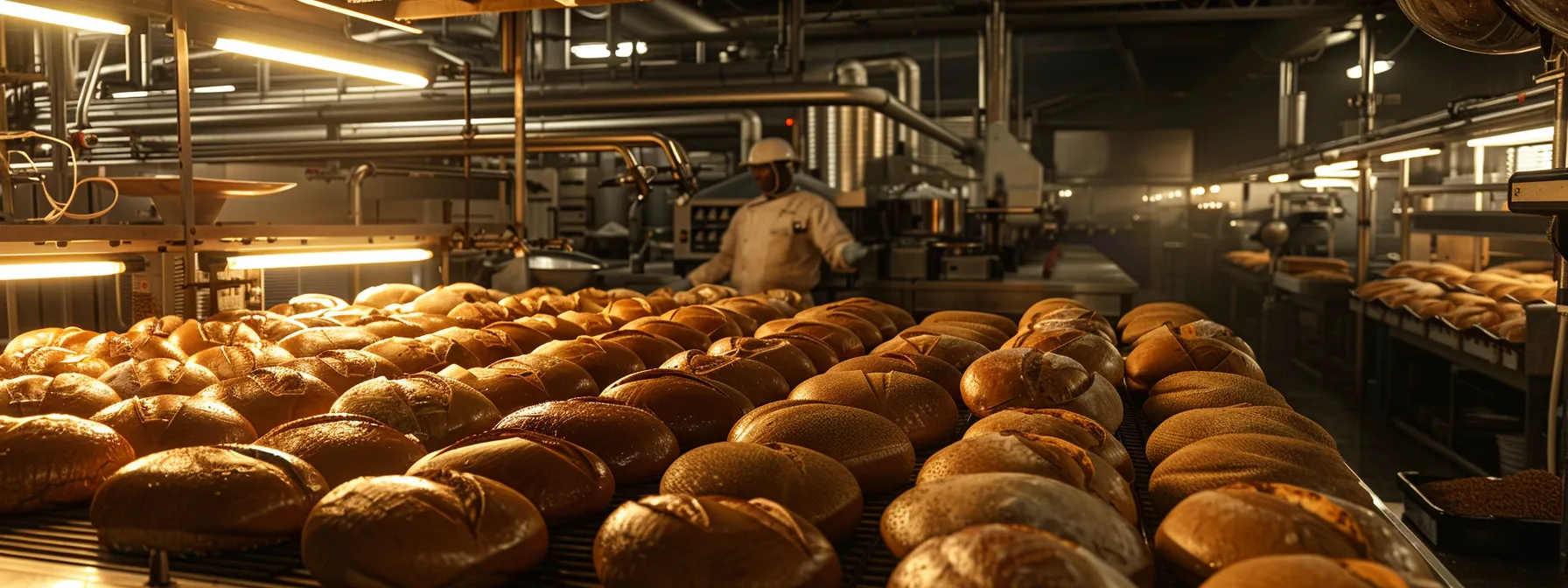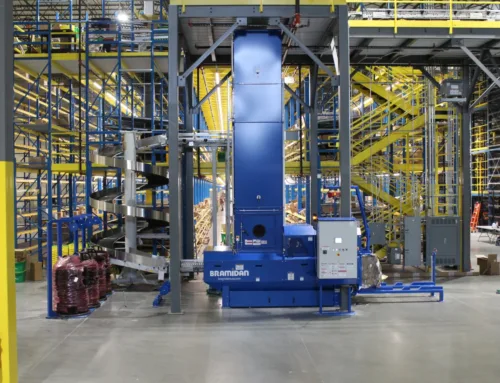
Selecting the right proofer can significantly boost productivity in your bakery. Did you know that proper airflow and controlled temperature can enhance dough fermentation, leading to better baking results? In this post, I will discuss the different types of proofers available, how to assess your bakery’s specific needs, and strategies for maintaining your equipment to maximize its lifespan. Understanding these elements will help you overcome common challenges, such as inconsistent dough performance and wasted ingredients. By engaging with this content, you’ll gain insights into how to improve your baking process and invest wisely in LBC bakery equipment.
Understanding the Role of a Proofer in Bakery Operations

Understanding the role of a proofer in bakery operations is essential for maximizing efficiency and product quality. I will discuss the science behind dough proofing, examining the fermentation process that influences taste and texture. I will also address common challenges faced during proofing, which can impact cooking results and effectiveness when using a rack oven. Automation in proofing Contact Us systems can mitigate these challenges, ensuring consistency and enhancing overall productivity.
The Science Behind Dough Proofing
The science behind dough proofing is fundamental to achieving the perfect texture and flavor in baked goods. When dough, enriched with ingredients like cream, is allowed to ferment, it develops gluten, creating the necessary elasticity for products such as doughnuts. Using convection proofers not only maintains optimal temperature and humidity levels but also enhances the fermentation process, leading to consistent and high-quality results in your bakery operations. Contact Us
Impact of Proper Proofing on Product Quality
Proper proofing directly influences the quality of pastries, impacting their texture and rise. I prioritize using equipment made from durable stainless steel, which ensures even heat distribution and stability during the fermentation process. Across my experience, I’ve found that maintaining the right temperature with a reliable thermometer and integrating oil into the dough formulation can significantly enhance the final product, leading to improved inventory management and reduced waste. Contact Us
Common Challenges in Proofing Processes
During my experience in bakery operations, I have encountered several challenges in proofing processes that can hinder efficiency and product quality. One significant issue is maintaining the appropriate temperature and humidity levels; fluctuations can cause inadequate fermentation, leading to uneven loaf results. Additionally, using low-quality equipment can compromise the integrity of the kneading process, creating inconsistencies in dough structure. Investing in high-quality stainless steel proofers not only helps stabilize these conditions but also optimizes energy usage, ultimately enhancing overall bakery performance. For more information, please Contact Us.
The proofer is vital for perfect dough. Now, let’s look at the different types of proofers available for your bakery and find the right fit for your needs.
Exploring Different Types of Proofers for Your Bakery

Choosing the right proofer can significantly impact your bakery’s efficiency and product quality. I will compare ambient versus temperature-controlled proofers, discuss the pros and cons of floor models versus countertop units, and highlight essential features to consider in modern Contact Us machines. Additionally, I will address energy efficiency and operational costs, ensuring your choices support both taste and food safety in your yeast-based products.
Ambient vs. Temperature-Controlled Proofers
When selecting proofers for my bakery, I have found that the choice between ambient and temperature-controlled proofers can significantly affect both the efficiency of operations and the quality of the end products. Ambient proofers rely on room temperature and humidity, which can fluctuate and impact the moisture levels in the dough made with wheat flour, potentially compromising the fermentation process. On the other hand, temperature-controlled proofers provide a consistent environment that maintains moisture and temperature, leading to better fermentation and ultimately enhancing customer satisfaction through superior product quality.
Floor Models vs. Countertop Units
In my experience with Bakery Equipment, choosing between floor models and countertop units for proofers can profoundly impact workflow and production quality. Floor models often accommodate larger batches of sourdough and baguette, providing ample space for fermentation while catering to the demands of high-volume operations. On the other hand, countertop units are ideal for smaller bakeries or those with limited space; they can still deliver reliable proofing results when paired with a convection oven, ensuring your wheat-based products rise perfectly without compromising on quality.
Features to Consider in Modern Proofers
When selecting modern proofers for my bakery, I prioritize features that enhance quality and efficiency. For instance, adjustable humidity and temperature controls are critical as they allow me to create optimal proofing conditions for various types of flour. Additionally, investing in proofers with ample shelving space simplifies the use of parchment paper for baked goods, ensuring that my products rise perfectly without compromising quality.
Energy Efficiency and Operational Costs
When evaluating energy efficiency and operational costs for proofers, I focus on how these factors directly influence my bakery’s bottom line. Choosing a model that optimizes the proofing process not only reduces energy consumption but also maintains ideal conditions for dough development. This means not only lesser utility bills but also improved customer satisfaction with each bake, making it essential to factor in both the nutritional quality of the final product and the long-term profitability of the operation.
- Evaluate energy efficiency in proofer selection.
- Assess how operational costs impact profitability.
- Consider customer satisfaction relating to product quality.
- Understand the influence of proofing on dough quality.
- Factor in nutritional benefits of well-proofed items.
Choosing the right proofer can make all the difference in your bakery. Let’s take a moment to assess your specific needs so you can select the best equipment for your unique operation.
Assessing Your Bakery’s Needs for Optimal Proofer Selection

When selecting the ideal proofer for my bakery, I assess key factors such as production volume and space constraints, ensuring that the equipment fits seamlessly within my existing layout. I also consider the types of baked goods produced, whether I’m using a mixer for dough or a pastry bag for delicate items. Workflow integration, along with staff training, plays an essential role in maximizing efficiency, while budget considerations and return on investment guide my purchasing decisions. Each of these elements impacts my overall inventory management, especially when planning alongside ovens and sheet pans.
Production Volume and Space Constraints
When assessing production volume and space constraints, I prioritize understanding my bakery’s output needs. As a baker, I recognize that selecting a proofer with effective temperature control and appropriate humidity levels is crucial for the quality of my bread and pastries. Optimal space utilization ensures my kitchen can function smoothly, preventing overcrowding of equipment while facilitating easy access to both proofers and the necessary bakery equipment for continuous operations.
- Evaluate production targets to select suitable proofers.
- Assess available kitchen space for efficient workflow.
- Consider the impact of temperature control on product quality.
- Factor in humidity requirements for various baked goods.
- Choose bakery equipment that complements overall operations.
Types of Baked Goods Produced
When considering the types of baked goods produced in my bakery, I focus on how each item requires specific proofing conditions. For example, products like baguettes and brioche need precise temperature and humidity levels to achieve the optimal rise and texture. By assessing my product lineup and understanding how different recipes interact with the proofing process, I can choose a proofer that enhances production efficiency and product quality. This commitment aligns with the standards at End2End Logix, where I can also find essential Deli Equipment and Display Freezers that complement my bakery needs.
- Assess baked goods for specific proofing needs.
- Understand temperature and humidity requirements.
- Align equipment choices with product quality goals.
- Consider additional equipment like Display Freezers for efficiency.
- Explore refrigeration parts to maintain optimal conditions.
Workflow Integration and Staff Training
Effective workflow integration in my bakery is essential for maximizing the benefits of the chosen proofer. I focus on establishing clear processes that allow staff to operate the proofer efficiently, from loading and unloading to monitoring temperature and humidity settings. Ensuring my team is well-trained on these procedures not only enhances productivity but also minimizes the risk of errors that could lead to compromised product quality, such as uneven proofing or spoilage.
Budget Considerations and Return on Investment
When evaluating budget considerations and return on investment for a proofer, I focus on how the initial expense translates into long-term savings and improved efficiency. Investing in a high-quality proofer can minimize energy costs and reduce product spoilage, enhancing profitability over time. By analyzing the cost-effectiveness of different models against my bakery’s production needs, I ensure my choice not only supports my budget but also contributes positively to overall operational performance.
You know what your bakery needs now. Let’s explore how the right proofer can boost your efficiency and improve your baking process.
Enhancing Efficiency With the Right Proofer

Reducing proofing time without sacrificing quality is essential for bakery efficiency. I focus on increasing consistency across batches, ensuring that every product meets customer expectations. Streamlining operations enhances throughput, allowing for greater production capacity, while minimizing waste improves sustainability, benefiting both the environment and the bottom line. Each of these elements will be explored in detail below.
Reducing Proofing Time Without Sacrificing Quality
Reducing proofing time in my bakery without sacrificing the quality of baked goods has been vital for operational efficiency. By utilizing advanced temperature-controlled proofers, I can create the ideal environment for fermentation, allowing dough to rise quickly while maintaining its necessary texture and flavor. Consistently monitoring humidity levels and adjusting them as needed ensures that products like bread and pastries achieve optimal development without prolonging the process, ultimately enhancing productivity and customer satisfaction.
Increasing Consistency Across Batches
To achieve increased consistency across batches in my bakery, I have relied on the precision of modern proofers equipped with advanced control features. By ensuring uniform temperature and humidity levels, I can maintain the same fermentation conditions for each batch of dough, which is critical for products like artisan breads and pastries. This commitment to consistency not only enhances product quality but also builds customer trust, as every item meets the same high standards every time.
Streamlining Operations for Higher Throughput
Streamlining operations in my bakery for higher throughput hinges on selecting the right proofer. By investing in proofers with features like adjustable humidity and temperature controls, I can optimize the fermentation process to suit various dough types, ensuring efficient rise times. This efficiency allows me to increase production volumes while maintaining quality, thereby meeting customer demand without sacrificing standards.
- Invest in adjustable humidity and temperature controls.
- Optimize fermentation process based on dough types.
- Increase production volumes while maintaining quality.
- Meet customer demand effectively.
- Enhance overall operational efficiency.
Minimizing Waste and Improving Sustainability
Minimizing waste in my bakery emphasizes the importance of selecting the right proofer. By using energy-efficient proofers that maintain consistent temperature and humidity, I can reduce the likelihood of dough spoilage and ensure every batch rises to its full potential. This careful approach not only conserves resources but also bolsters my bottom line, as less waste translates to higher profitability and a more sustainable operation.
Every bakery has a story of growth and success. Next, let’s look at those who have thrived by implementing the right proofer in their kitchens.
Real-World Examples of Successful Proofer Implementation

In examining real-world applications of ideal proofers, I will share two insightful case studies. First, I will explore how an artisan bakery successfully boosted productivity through upgraded proofing equipment. Next, I will detail how a commercial bakery optimized space and output efficiency. Lastly, I will discuss the valuable lessons learned from these upgrades, emphasizing their impact on operational effectiveness.
Case Study: Artisan Bakery Boosts Productivity
In my experience with an artisan bakery, upgrading to a modern proofer significantly boosted productivity. The installation of a temperature-controlled proofer allowed for precise humidity and temperature management, which optimized the fermentation process for various dough types. This change not only enhanced the quality of the baked goods but also streamlined operations, enabling the bakery to meet increasing customer demand more efficiently.
- Identified the need for improved proofing to enhance productivity.
- Invested in a temperature-controlled proofer for better dough management.
- Achieved consistent fermentation leading to higher quality baked goods.
- Streamlined operations to accommodate growing customer demand.
Case Study: Commercial Bakery Optimizes Space and Output
In my experience working with a large commercial bakery, the implementation of a compact temperature-controlled proofer drastically transformed our workflow. By optimizing the use of vertical space with a multi-tiered design, we were able to significantly increase our production capacity without the need for additional floor space. This strategic investment not only enhanced the consistency of our proofing process but also streamlined operations, allowing us to meet growing customer demand while maintaining the quality of our baked goods.
Lessons Learned From Upgrading Proofing Equipment
Upgrading proofing equipment has taught me invaluable lessons about optimizing operations and enhancing product quality. For instance, I learned that investing in advanced temperature-controlled proofers not only improves fermentation consistency but also significantly reduces waste due to spoilage. This experience has reinforced my belief in the importance of selecting the right proofer to align with production goals, ultimately leading to a more efficient bakery environment.
Every proofer needs care to keep working well. Let’s explore how to maintain and maximize the lifespan of your essential equipment.
Maintaining and Maximizing the Lifespan of Your Proofer

To ensure my proofer operates efficiently, I focus on routine cleaning and maintenance tips that prevent common issues. I’ll cover troubleshooting techniques for addressing frequent proofer problems, scheduling regular professional servicing to maintain optimal performance, and upgrading components to boost efficiency. Each of these steps is crucial in maximizing the lifespan of my proofer, ensuring consistent quality in every batch.
Routine Cleaning and Maintenance Tips
To maintain the longevity of my proofer, I prioritize routine cleaning and maintenance as a key factor in ensuring optimal performance. Regularly wiping down the interior surfaces with a mild detergent helps prevent the buildup of yeast and dough residue, which can affect the quality of fermentation. I also schedule comprehensive inspections to check for any mechanical issues, ensuring that my proofers operate efficiently and consistently deliver the perfect environment for my bakery’s dough.
Troubleshooting Common Proofer Issues
Troubleshooting common proofer issues is essential for maintaining operational efficiency in my bakery. One common problem I encounter is fluctuating temperature and humidity levels, which can result in uneven dough rising. Regularly checking the equipment‘s calibration can prevent these issues; if I find inconsistencies, I immediately adjust the settings or consult the manual to ensure the proofer delivers the optimal environment. Staying proactive with these checks minimizes potential disruptions in my baking schedule, helping to safeguard product quality.
Scheduling Regular Professional Servicing
Scheduling regular professional servicing for my proofer is fundamental to maintaining its efficiency and lifespan. I recommend setting up annual or biannual service appointments with qualified technicians who can conduct thorough inspections and promptly address any mechanical issues. This proactive approach not only prevents unexpected breakdowns but also ensures that my proofer consistently provides the optimal environment needed for perfect dough fermentation, which is crucial for delivering high-quality baked goods.
Upgrading Components for Improved Performance
Upgrading components in my proofer can lead to significant improvements in performance and energy efficiency. For instance, replacing old humidity sensors with more accurate models ensures that the fermentation environment is consistently monitored and adjusted, enhancing the quality of my dough. Incorporating advanced temperature controllers further optimizes the proofing process, reducing energy consumption while maintaining ideal conditions for my baked goods.
- Upgrade humidity sensors for improved monitoring.
- Incorporate advanced temperature controllers for efficiency.
- Enhance overall performance and energy savings.
- Ensure consistent baking results with optimized conditions.
Conclusion
Selecting the ideal proofer is crucial for maximizing bakery efficiency and product quality. By understanding the science of dough proofing and addressing common challenges, bakeries can enhance consistency and reduce waste. Investing in high-quality, temperature-controlled proofers ensures a stable environment for fermentation, leading to superior baked goods. Ultimately, the right proofer not only boosts productivity but also supports long-term profitability and customer satisfaction in today’s competitive market.
Share This Story, Choose Your Platform!
Get In Touch
Phone: (847) 722-6942
Email: sales@end2endlogix.com
Web: end2endlogix.com


